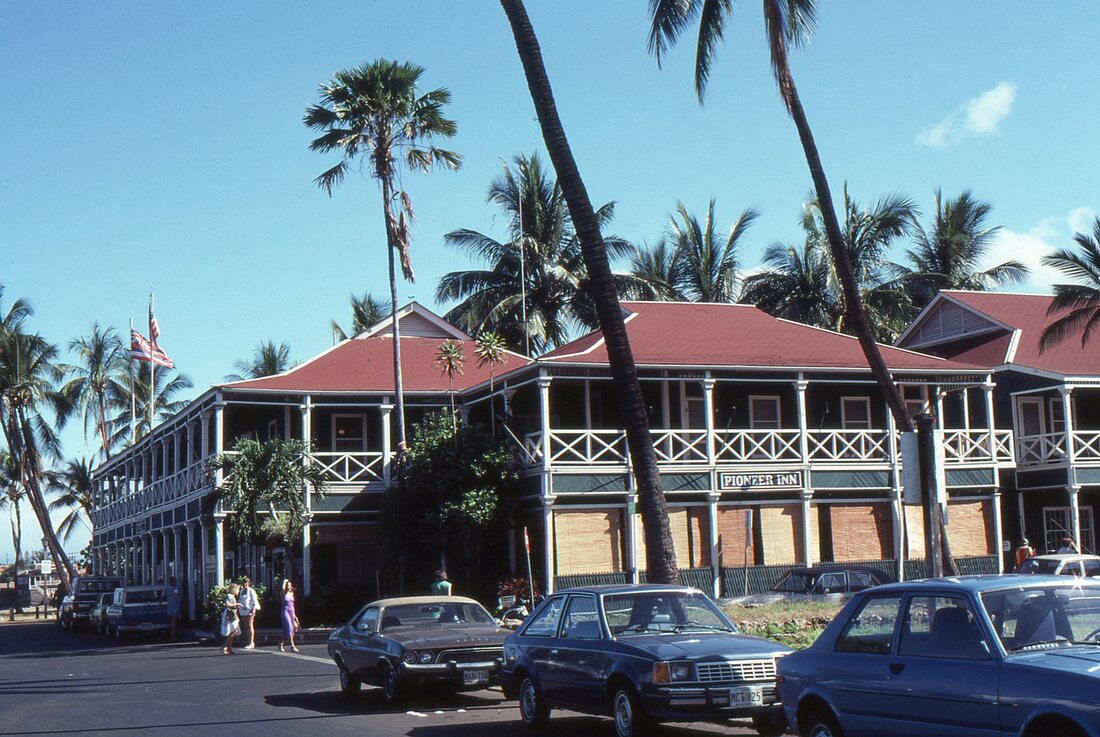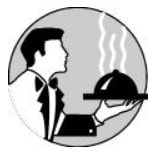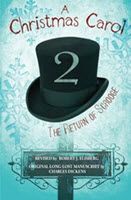|
Adam McKay is an Oscar-winning writer/director/producer whose work includes Don't Look Up, The Big Short, Anchorman, Talledega Nights, The Other Guys and many others. He also co-founded with Will Ferrell the wonderful "Funny or Die" website. What McKay also founded was Yellow Dot Studios, which is a non-profit production company to fight back on climate disinformation and inaction. I was unaware of them until just the other day, but they have a lot of very good videos that they've put out for years, which you can find on their website. They came to my attention the other day when I saw their latest video. It's directed by McKay with narration performed by Ron Perlman, star of the Hellboy movies and much more, and it was written by Josh Olson. The impetus for the fake ad comes from when ExxonMobil CEO Darren Woods suggested that it was consumers who are to blame for the toxic carbon emissions, rather than what his company produces.
0 Comments
If you didn't see Last Week Tonight with John Oliver on Sunday, the Main Story was about Deep Sea Mining. It's an extremely fascinating piece, that deals with a subject that has the potential of being an ecological disaster. That they make it as funny as they do is just a bonus. A couple of weeks ago, I posted here a very funny "challenge" of sorts that John Oliver made on Last Week Tonight to help make the Puteketeke the "Bird of the Century" in a contest held in New Zealand by the organization Forest & Bird. It was a stunt that even by Oliver's own admission was "alarmingly aggressive”. On Sunday, he dealt with the results. And not surprisingly, it was a treat. Unfortunately, the show only makes its Main Story available online. However -- good news -- I recorded the Bird of the Century story off my TV using my mobile phone. The sound is a bit tinny, but it's perfectly clear. I thought of recording again, but...well, no matter how small it is, holding a mobile phone reasonably steady for eight minutes just one time is more than enough for this. (How much is that? The video was too large to embed on this site. It was 1.3 gigabyte, and the limit is 1 GB. However, I was able to compress it a little, and I think the quality is still just about as good. But it took a long time and then to encode for the site. But I digress. And compress...) By the way, just to reiterate -- as I noted in the earlier article, before putting this effort into operation, the Last Week Tonight people contacted Bird & Forest to let them know they wanted to do something (they didn't say what...) and asked if the organization was okay with that. They were, so they were aware that the show was going to do something. And it's important to know, too, that Forest & Bird particularly appreciated the worldwide attention that they got from the stunt, and also that they raise money off of this event. And...well, let's just say that they did fine this year. Of course, it's also worth making clear (which it likely is to most people) that this isn't an official national contest with any actual, substantive meaning. And further, that any bird organization in New Zealand or anywhere in the world can have their own Bird of the Century contest if the way. And in the end, the Puteketeke is an impressive-looking bird. With, as John Oliver notes, a name that's so much fun to say. Yesterday, we posted the Main Story here from this past Sunday's Last Week Tonight with John Oliver, a serious look at Abortion Rights, with the show's usual comic perspective. This is not that again. It's just something else the show did that was too much fun not to include. Generally, the show has a standard order. They open with a few headlines, then go to "And now this..." which is an amusing few minutes on a specific theme, and then end with the Main Story. On occasion, they'll have a funny final story. On Sunday, however, they went directly from the headlines to the Main Story, which was surprising. There were still almost 35 minutes to go, which would have been a very long time for a Main Story. It turned out, however, that there was a good reason for all this. That's because after the Main Story they did another story for 12 minutes. And for reasons that will be clear, it had to come after the Main Story -- not before -- because it was one of those things for which the phrase, "I wouldn't want to follow that," was coined. It was a story about a "Bird of the Year" contest in New Zealand. Or this year, a "Bird of the Century" contest. The report was a lot of fun and very funny. And then got funnier as it went out, building to wonderful hilarity in a way that only Last Week Tonight does. And then...it topped even that. You couldn't have gone from that to a Main Story on Abortion Rights. In fact, you wouldn't have wanted anything to go after it. For reasons that will be clear. The problem is that while Last Week Tonight always posts the Main Story, that's usually all they make available. And such was the case with this report on the bird contest in New Zealand. But I search for it, to see if somewhere what got posted, somehow. I found a few short clips, but that was it. And then finally, I found someone who seems to have recorded the report on the phone, and then posted it on Tik-Tok. The audio quality isn't great, a bit tinny, and the image is much smaller than ideal -- but a) the audio and image are fine, and b) this is too funny not to use it and be grateful it exists. But do click on the "diagonal arrows" in the lower-right corner of the video to make the image it a bit larger. I'll just say to keep an ear open for a two-word phrase that begins with the word "alarmingly." This cuts off right before the end, but I'll post the final line below. However, for those who want the full, brilliant experience, I found a video of the final minute -- with the last line intact. So, when he starts to get up from his desk, stop the video here and then scroll down. (However, if you just want to watch this Tik-Tok video alone, fine, I'll post the cut-off line under the second video. I trust this is all clear...) And fun, too, I'll have a brief follow-up on some of the reaction to this, which I'll post underneath the video, as well. We are a full, information service, after all. But it's best to watch this first with unsuspecting eyes... As I said, if you want to see the final line that gets cut off here -- and also see the final minute in glorious full screen -- here's the video of it. And as before, just click on the "diagonal arrows" in the lower right corner once the video starts to fill the screen. It's worth it... (But if you've already watched most of that final minute and only want to know the last line, I'll post it directly below.) Okay, for those who only want to know the final line, it's when Oliver says, "This is what democracy is all about – America interfering in foreign elections!!" I also want to reiterate that I think the phrase "alarmingly aggressive” is one of the funniest that the show has used. And the show may have blown its promotion budget for the year. Finally, while there has been some criticism of the show getting involved with, basically, hijacking the contest, I'm happy to note that the organization running it was not only fine with it, but they appreciated it. And surprisingly, as you'll see, it turns out that the show responsibly gave the organization an idea ahead of time that they would be getting involved. So, the organization was not caught totally unawares. And...was fine with it. From two articles I found -- "Quoting Forest and Bird’s response at the time, he said: “'We’re not mad, just impressed that someone cares enough about New Zealand’s native birds to rig the competition. This all speaks to how much the people of New Zealand justifiably love this competition.'” And... "Forest & Bird CEO Nicola Toki told Morning Report she was unperturbed by Oliver's attempt at fixing the vote, and their website had held up. "'It's fair to say that a fair amount of weight was applied to work on it. My team working on it has had very little sleep. We're pretty impressed that the website held up, given the thousands and thousands of votes that came in.' "The vote-rigging was not unexpected, as the team behind Oliver's show had been in touch earlier this year. "'They were keen to be involved and we said, 'Go for it!'" "All votes would need to be verified, but the bar to entry was low, she added. "'You need to be a bird lover and someone with a valid email address. As John Oliver figured out, it doesn't matter where in the world you are.' "The controversy around this latest flurry of votes did not bother Toki. "'We rise to a challenge here in New Zealand - let's treat this as our new Everest, to show we can punch above our weight.'" In fact, the organization even happily promoted their contest on social media with a nod to Last Week Tonight's efforts. Three weeks back, I wrote here about the devastating Lahaina fire on Maui and having traveled there several decades ago with deeply fond memories. The town, I said, "had a sense of the past and world culture that seemed to be living all around you." I particularly singled out the Pioneer Inn, where I stayed and remembered with great affection, all the more so since it was destroyed in the fire.
"But most of all, I loved staying at the Pioneer Inn. It permeated the Old World with simplicity and warmth, and I soaked it all up, reveling in knowing not only how it fit into the whaling past, but that people like Mark Twain had stayed there. Its wood structure painted white, with wonderful wood slats in the windows, and a Polynesian sensibility crossed with New England sturdiness." I had such fondness for the Pioneer Inn that I'd kept matchbook keepsake from my time there, and embedded photos of it. I had wanted to post a photo of the place itself, but didn't think I had access to a photo I'd taken of the Pioneer Inn -- but happily I was able to find it. I've added it in the originally article. And as an homage, since I figure most people here aren't going to be going back to read it, I include it below This summer, we have seen a massive increase in the ravages of Climate Change – from non-stop days of 100-degree heat, cities hitting record temperature highs, vast wildfires in Canada so immense that they brought sky-blocking clouds of dust down into the United States, a crushing wildfire in Lahaina that wiped out much of the town, an unprecedented hurricane in Southern California and more.
I’ve figured out who is responsible for all the Climate Change problems. Al Gore. Yes, yes, I know that Al Gore is considered one of the fathers who brought the “inconvenient truth” about Climate Change to the attention of the American public. But despite that, he is the person who I think it is to blame for the ongoing problem. Actually, no, not “despite that,” but rather the cause of it. For reasons unknown to their small minds, Republicans hate Al Gore. Viscerally hate Al Gore. Still. It comes from the period when Republicans were really beginning to hate individual Democrats with an overwhelming, red-hot passion for the main reason being that they were individual Democrats. (Reasons, like "he's too slick" and "she doesn't like to make cookies," were always just a convenient peg to hang the hate on.) It may have started with Bill and Hillary Clinton, but it built to Al Gore and since then they’ve turned it into an art form, where Barack Obama was apparently an agent of the devil, and they now want to impeach President Biden without exactly being able to give you an impeachable reason why. Al Gore was always generally considered a bit bland and wooden, so he seems a weird choice to hate so virulently. Perhaps daring to run for president and getting more national votes than George W. Bush and most-probably winning the election was a starting point for hating him so much. Then his receiving the Nobel Prize. And then having his documentary film An Inconvenient Truth win the Oscar only served as a strong foundation on which to keep building their hate. (I had reason to work with Al Gore on a project in 2008, a proposed radio series for Westwood One, in which he’d discuss environmental stories daily, each episode about 90 seconds. I was to be the writer, and we recorded about half a dozen episodes. It got about 200 stations to sign up and raised around $2 million, but that wasn’t enough to justify going forward – it was to me! But I wasn’t asked…– and so the project ended there. I’ll just add that Al Gore was anything but bland and wooden. He was an incredibly smart guy, who was thoughtful, occasionally funny, very interesting and came across personably.) And so, whatever their small-minded, early-fascist reasons, Republicans hated Al Gore and ridiculed him. Ridiculed him for most anything he did and said. And when he became the leading voice in the U.S. – and one of the leading voices around the world – about the existential dangers of Climate Change, Republicans had a knee-jerk reaction that We Must Dismiss This as a Hoax and Insist it Does Not, Not, Not Exist Because and Specifically Because It is from Al Gore. And ever since then, Republicans have buried their collective heads in the mud about Climate Change. It not only was a threat to the Almighty God of Oil which Republicans seem to believe they must protect at all costs, but it was a threat to Life as We Know It because the warning came from Al Gore. Any time subsequent proposals or laws came up to address Climate Change, Republicans have risen to do their best to block them. When there was a massive, unprecedented hurricane, flood or fire, it was never because of Climate Change to Republicans. Rather, at least according to Pat Robertson, it was God punishing the liberals who live there. (Never mind all the conservatives who lived there to. God, apparently, in Pat Robertson World, couldn’t differentiate.) When Trump took office, he actually pulled the United States out of the Paris Accord, becoming one of only three nations in the entire world that weren’t involved with trying to find solutions to the dangers of Climate Change that every other nation in the world (none of which turn out to have Al Gore as a citizen) accepted. The other countries two were Nicaragua and Syria – impressive company to be in. (The U.S. rejoined under President Biden.) When there were monumental wildfires burning throughout liberal California and the Pacific Northwest in 2018, Republicans didn’t see them as being caused by Climate Change. Instead, their leader Trump blamed them (quite literally) on not sweeping the forests well enough. When Ron DeSantis was a congressman, and Hurricane Sandy pummeled the Northeast, he voted against federal aid to the liberals of New York and New Jersey. (Never mind all the conservatives who lived there...) Though now that he’s governor of Florida, and a tree crashed at his residence, he did accept federal emergency funding for the devastation caused by Hurricane Idalia. Though, in fairness, he did refuse to meet with the liberal President Biden. The new, empty poster boy of the GOP, Vivek Ramasawmy, said at the recent Republican debate that he believed Climate Change was a hoax. And more than that, he bizarrely, reprehensibly and dangerously claimed that more people have died from Climate Change policies than from Climate Change itself. Tell that to the 1,000 people alone who just perished in Lahaina. And all those who have died from hurricanes, wildfires and floods over the recent years. And probably the none who have died from policies. And never mind the many billions of dollars spent repairing the destroyed infrastructure and results of all the devastation. And not one Republican on the presidential debate stage told him he was bizarre, reprehensible and dangerous – and wrong. And nuts. This Republican ignoring of Climate Change been ongoing, and the specter of Al Gore permeates every bit of it. After all, if Republicans accept Climate Change, then it means that crazy, awful Al Gore has been right from the first. Republicans simply don’t believe in Climate Change. Not grasping that science is not a belief system. And they close their eyes to the realities of it around them. And so temperatures rise, ice caps melt, winter storms increase, record low temperatures hit, wildfires increase, unrelenting 100-degree days follow one another, record high temperatures hit, the strength and frequency of hurricanes increase, tornados increase, floods increase and on and on and on… As people die. And homes and structures and communities are destroyed. But Republicans don’t believe in Climate Change. It’s just all part of a “cycle.” It’s natural, all this devasting heat, freezing, hurricanes, floods, wildfires and tornados around the world. Just ignore it, this too will pass -- along with lakes, reservoirs, towns and crops. The odd thing about all this refusal is that (other than acknowledging that Al Gore has been right), there’s almost no downside to accepting the reality of Climate Change. Only that oil company profits eventually will go down -- in several decades. But even if it magically turned out that Climate Change was really just a fantasy and temporary, and all the efforts to address it weren’t necessary, society would still have built up new industries to make Mankind self-reliant and created hundreds of thousands new jobs and brought down the costs of energy and made the United States energy independent. And that’s if everyone was wrong about Climate Change! Now, instead, imagine – and understand – that science and scientists are right, and with it all the benefits to helping save humanity. But Republicans don’t, won’t, can’t, will not let themselves “believe” in Climate Change. I blame Al Gore. I think it’s all his fault why Republicans are scared to admit that he was right and are willing to let civilization burn and then freeze and be destroyed. It’s so on-brand for them. |
AuthorRobert J. Elisberg is a political commentator, screenwriter, novelist, tech writer and also some other things that I just tend to keep forgetting. Feedspot Badge of Honor
Archives
June 2024
Categories
All
|
|
© Copyright Robert J. Elisberg 2024
|








 RSS Feed
RSS Feed